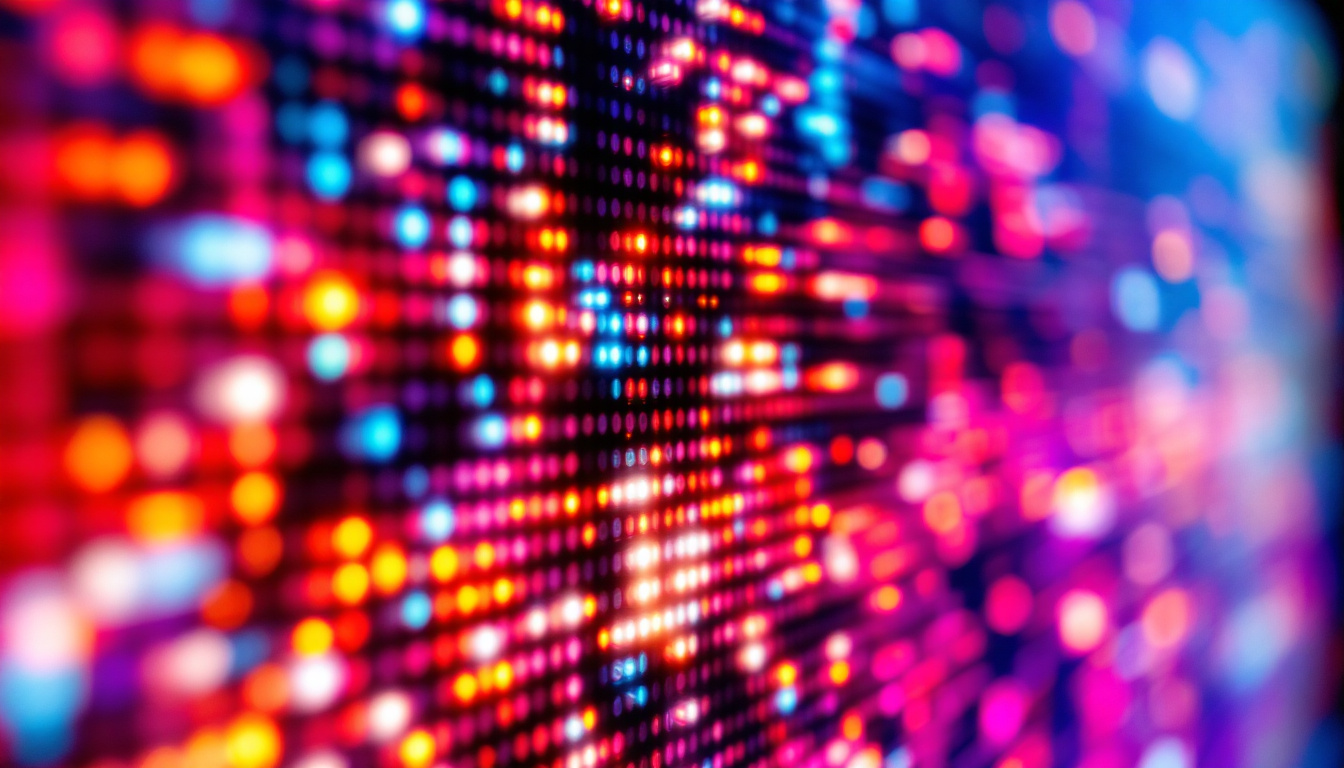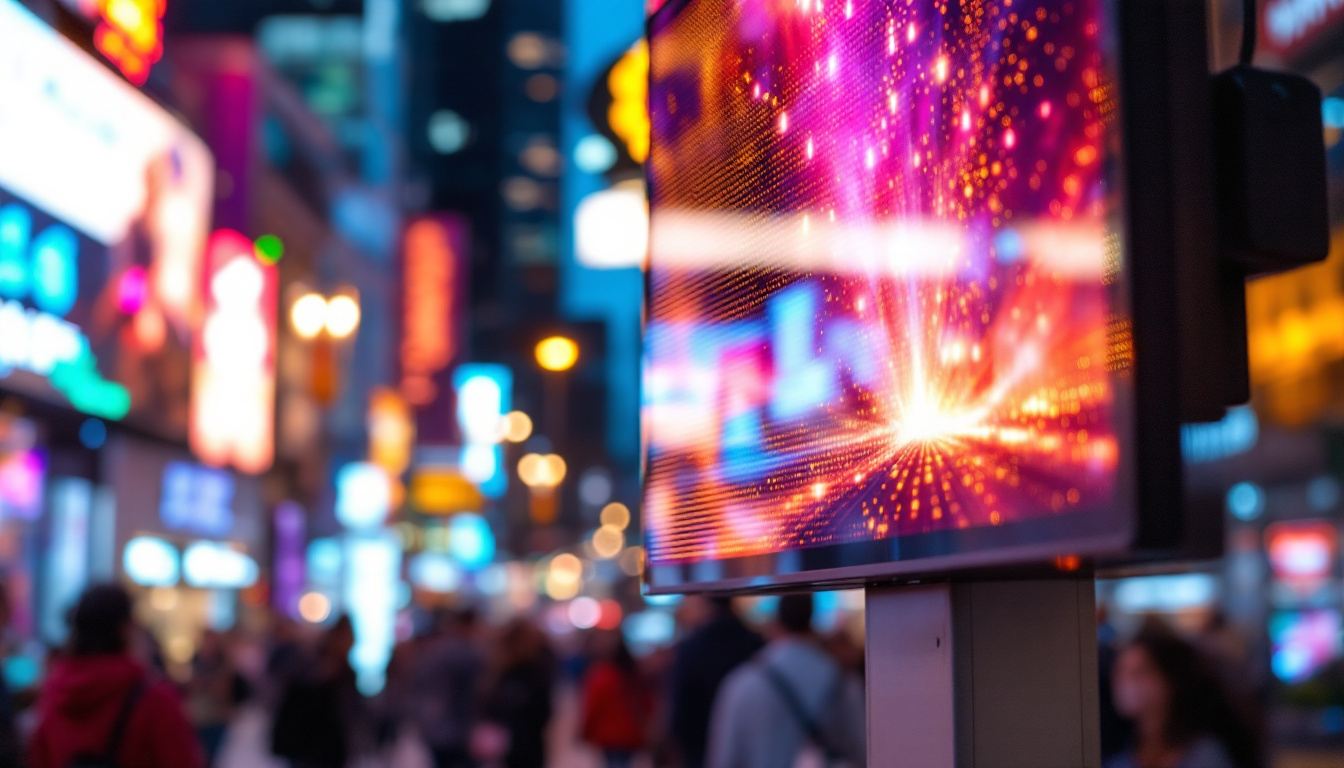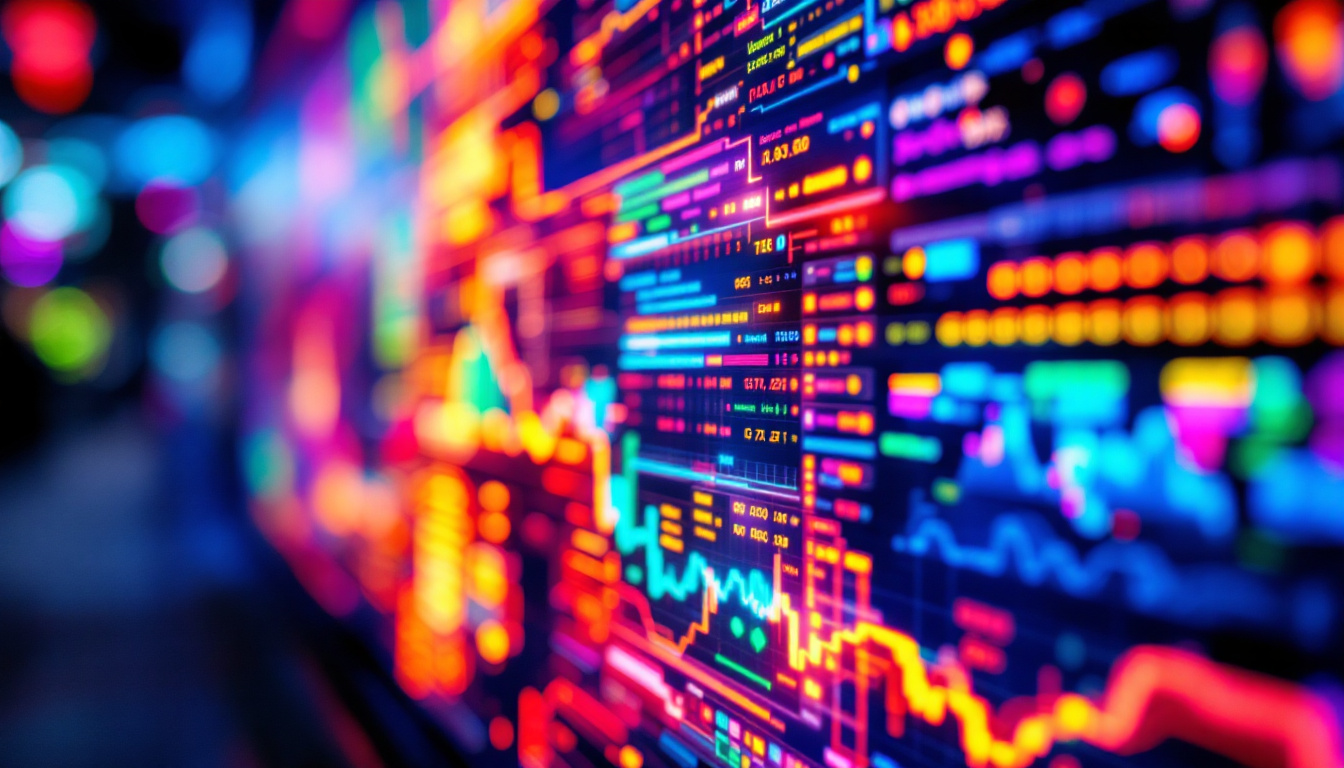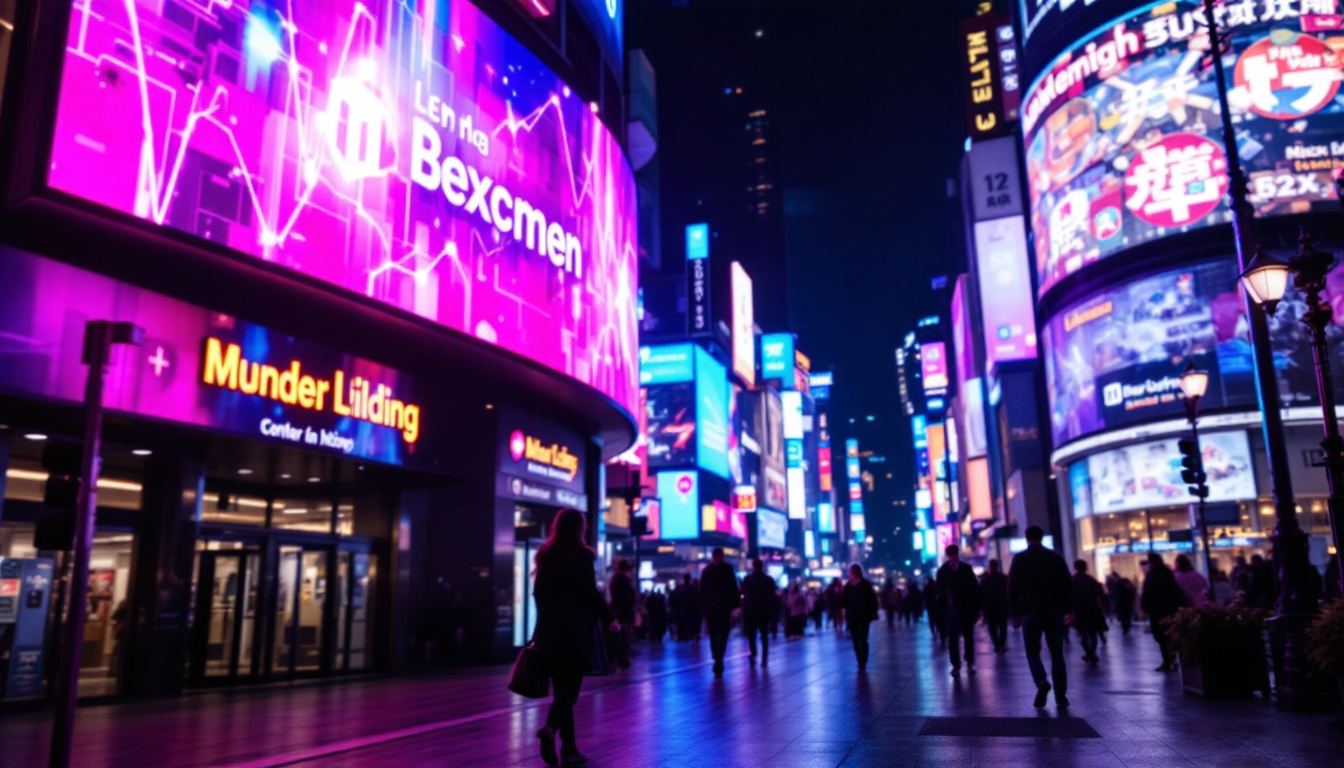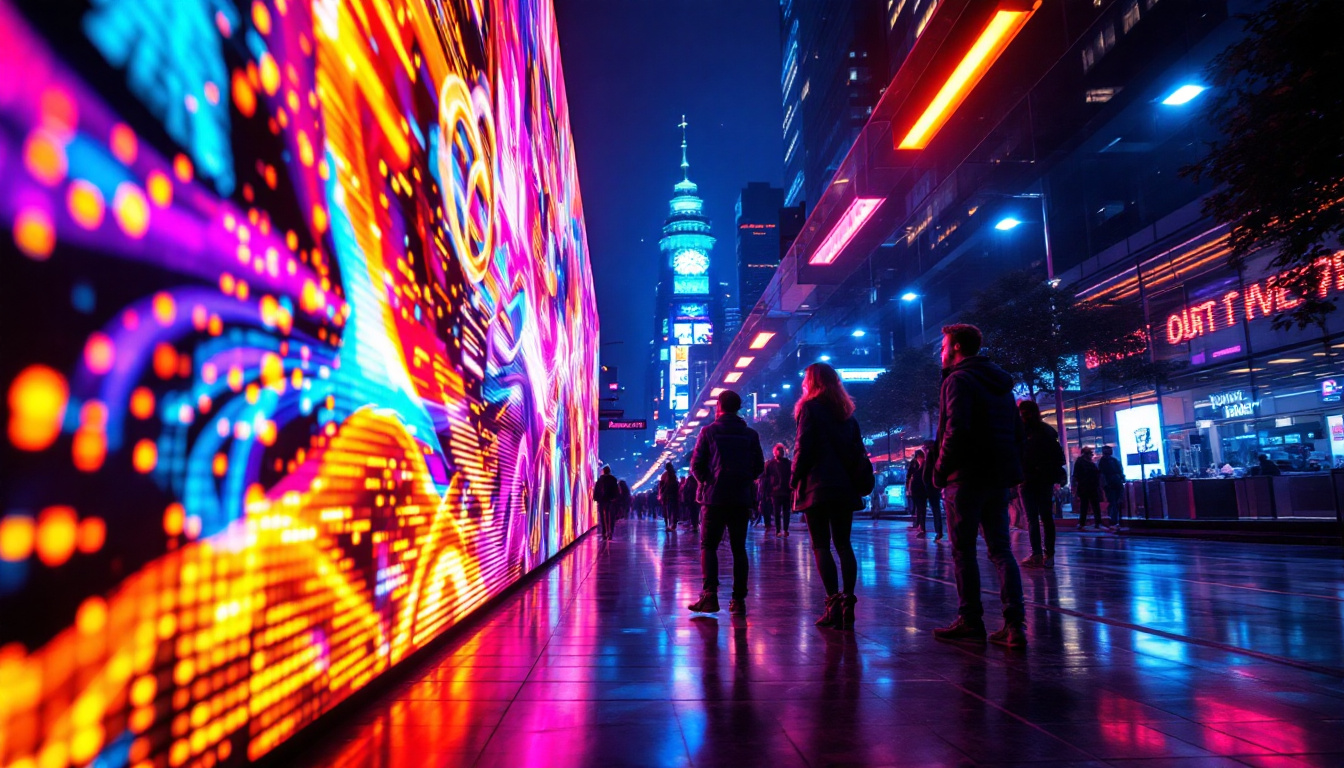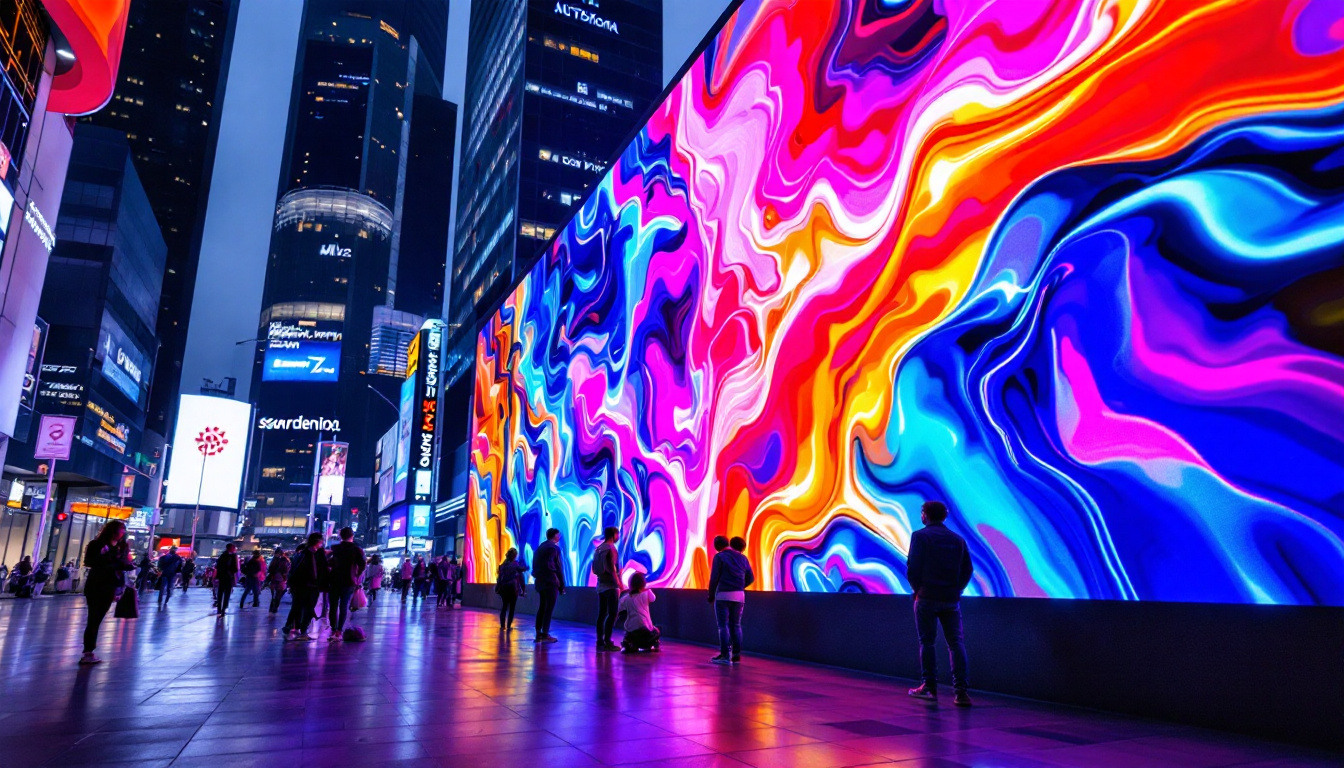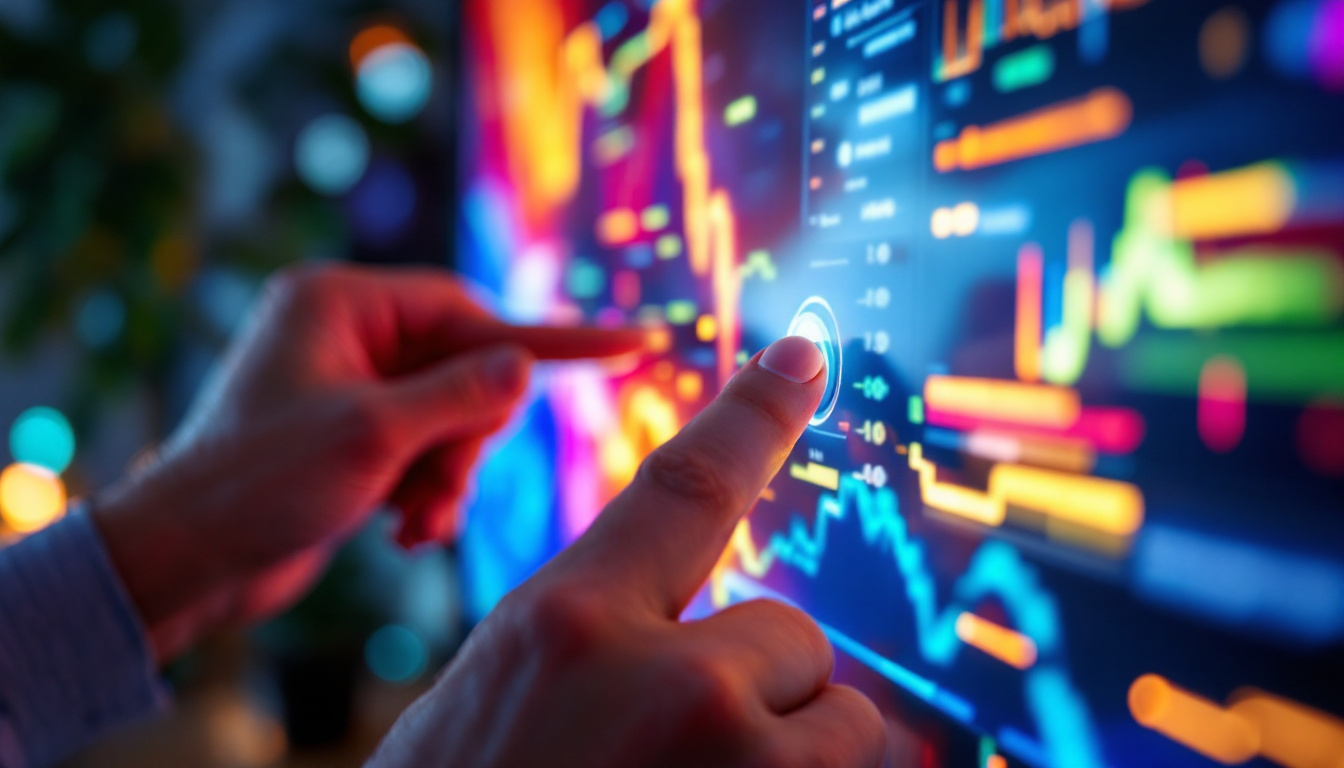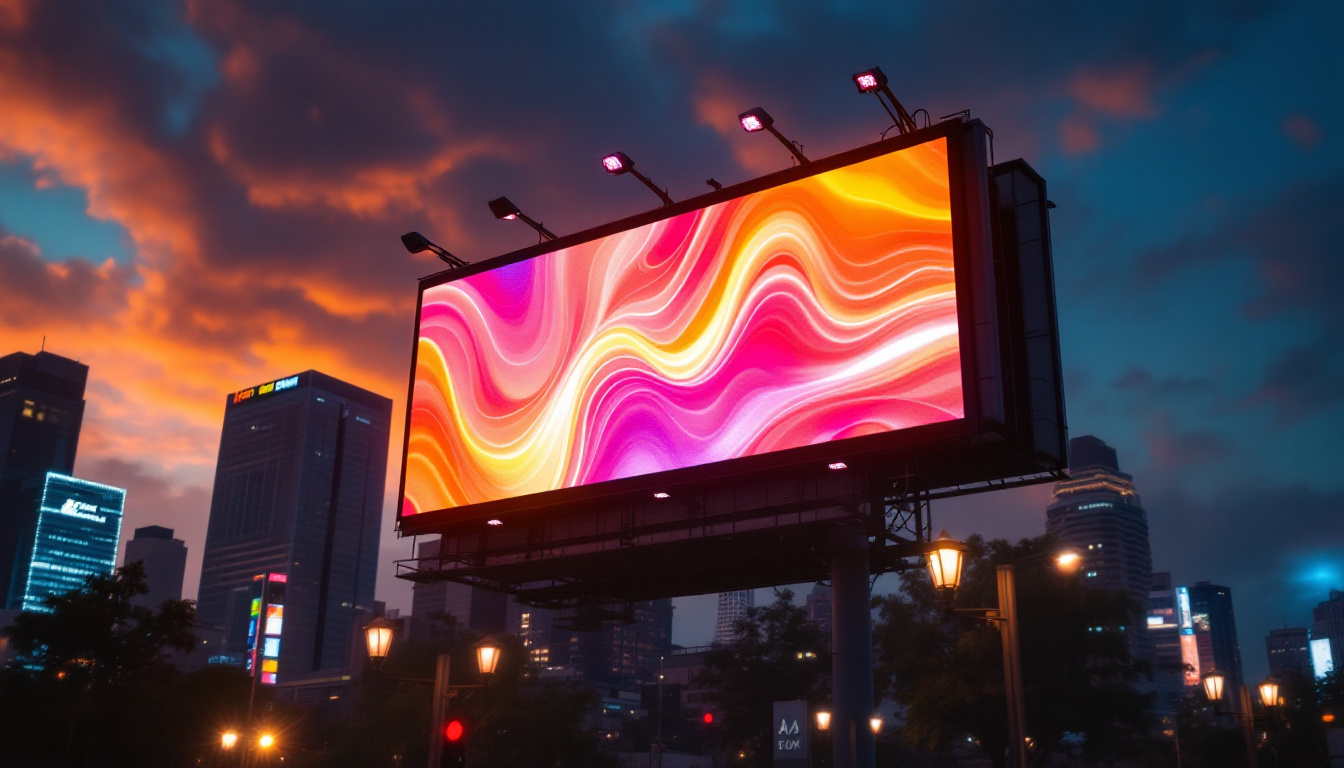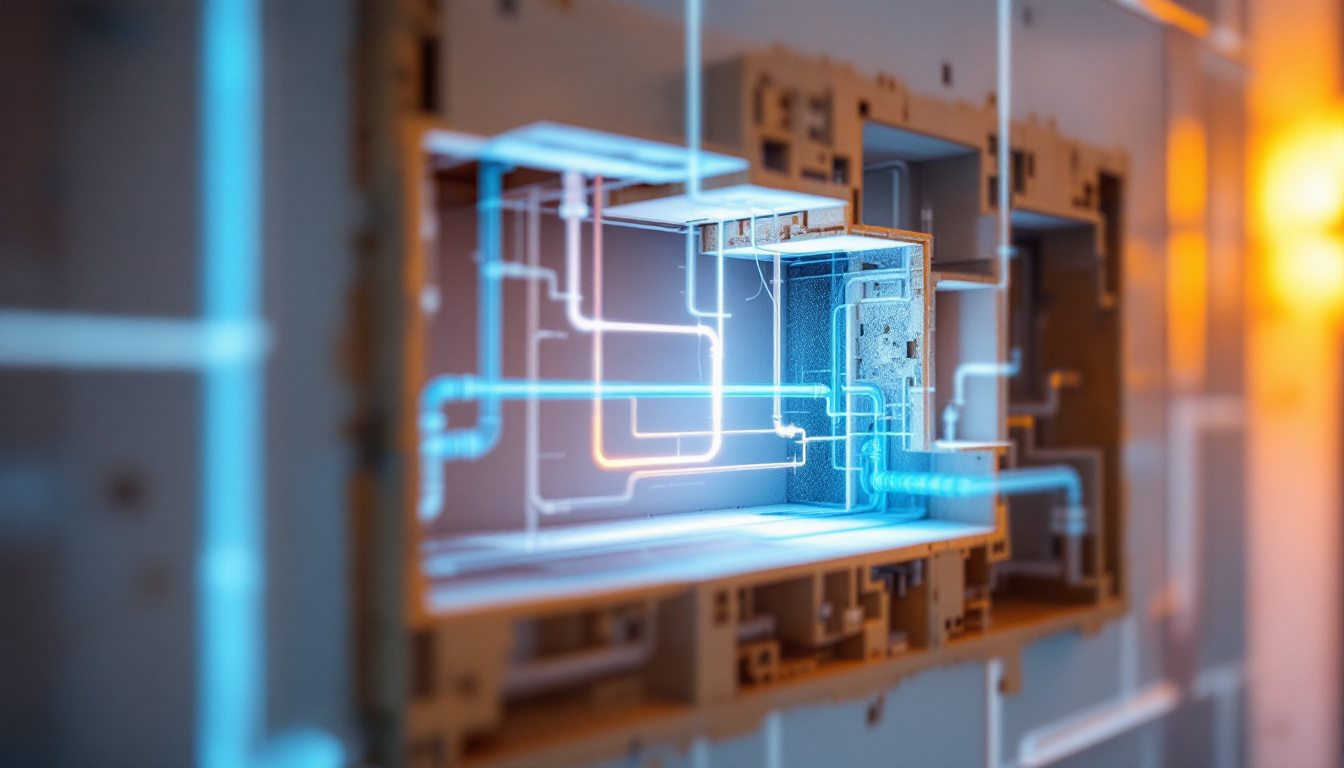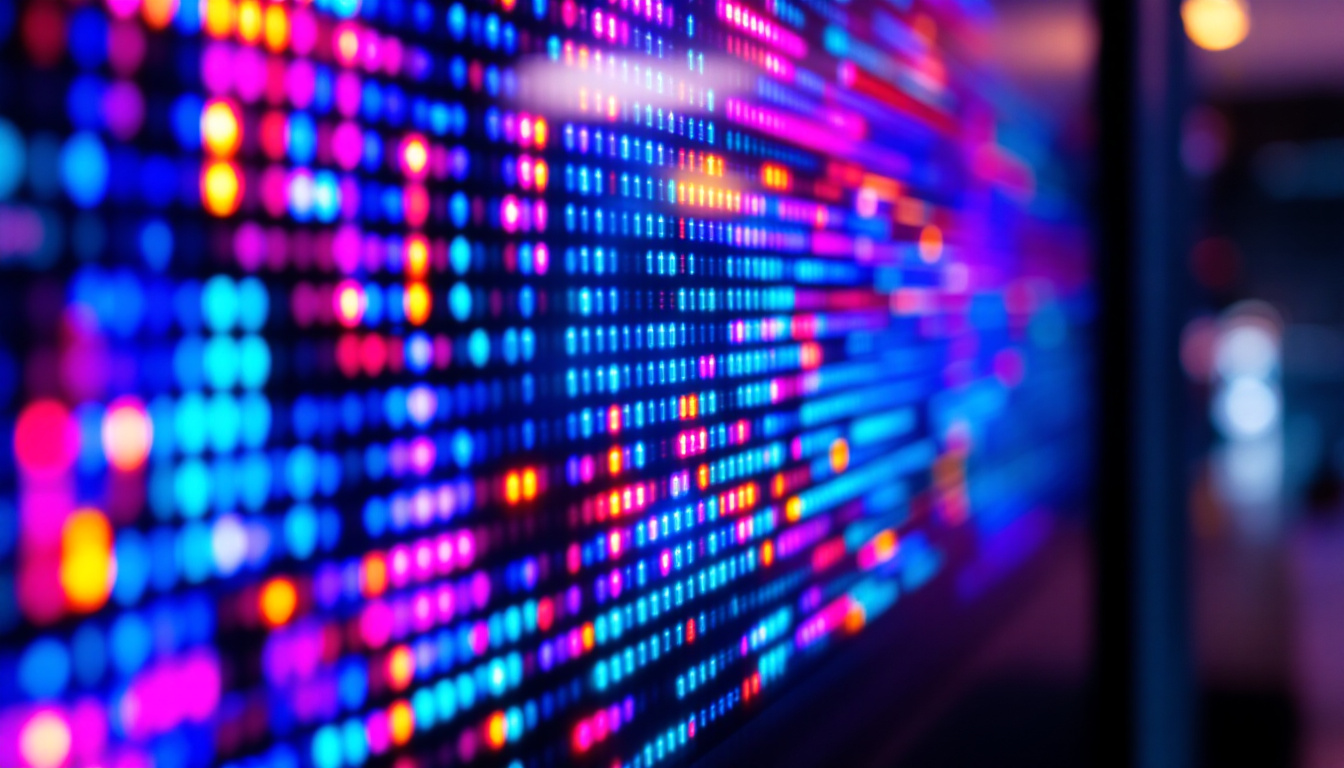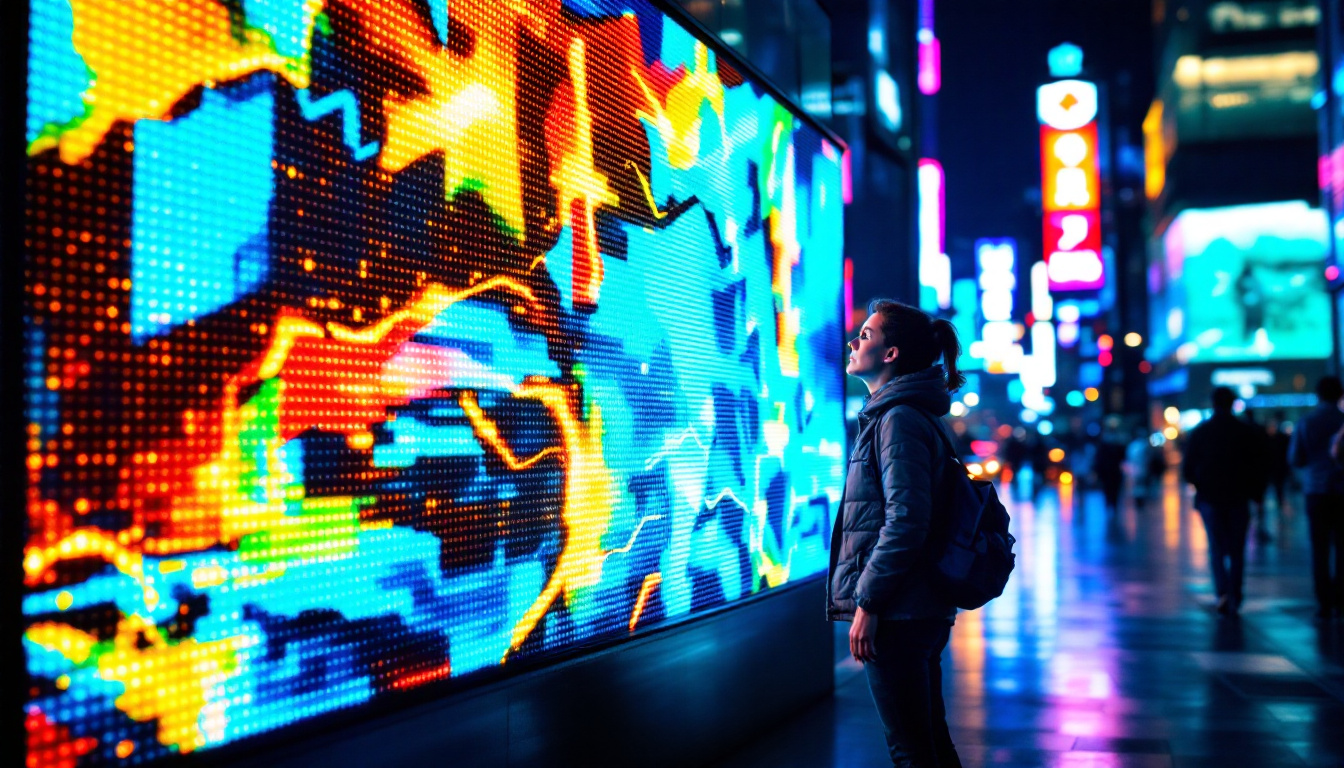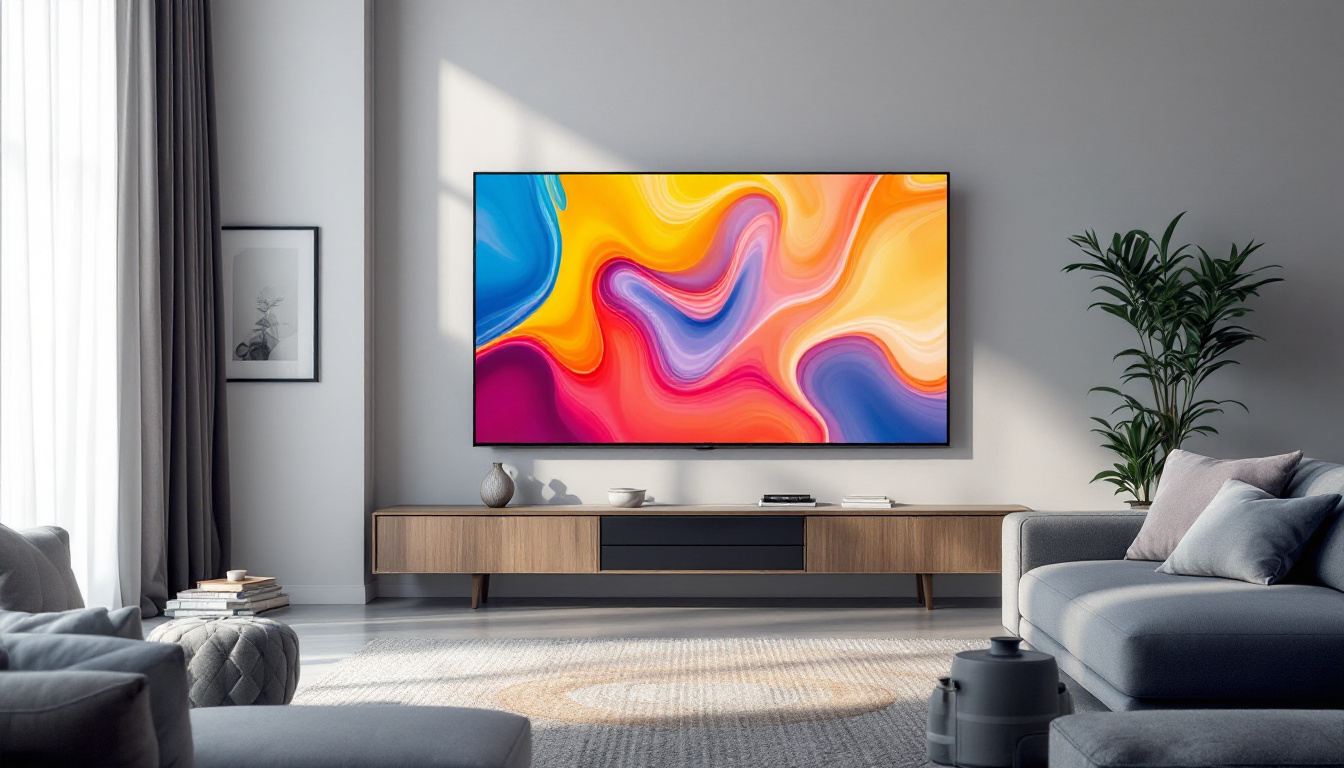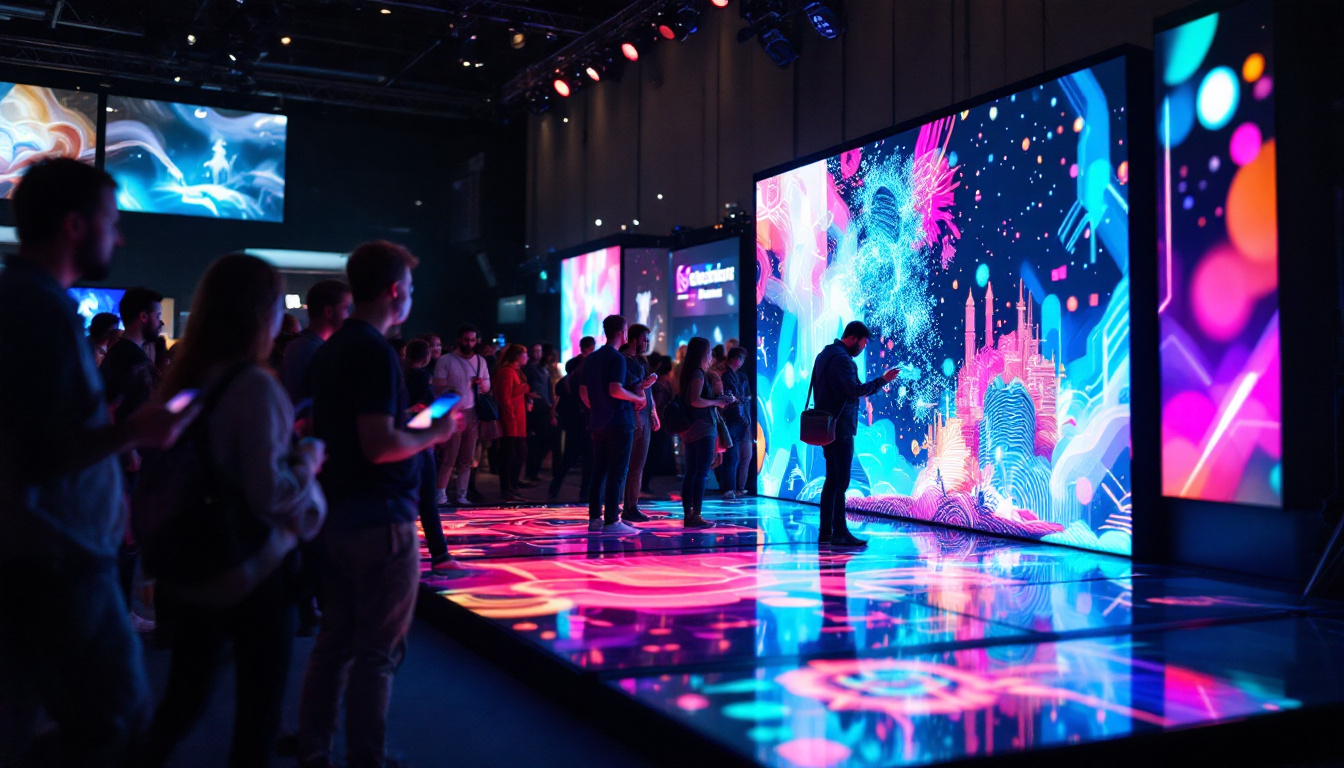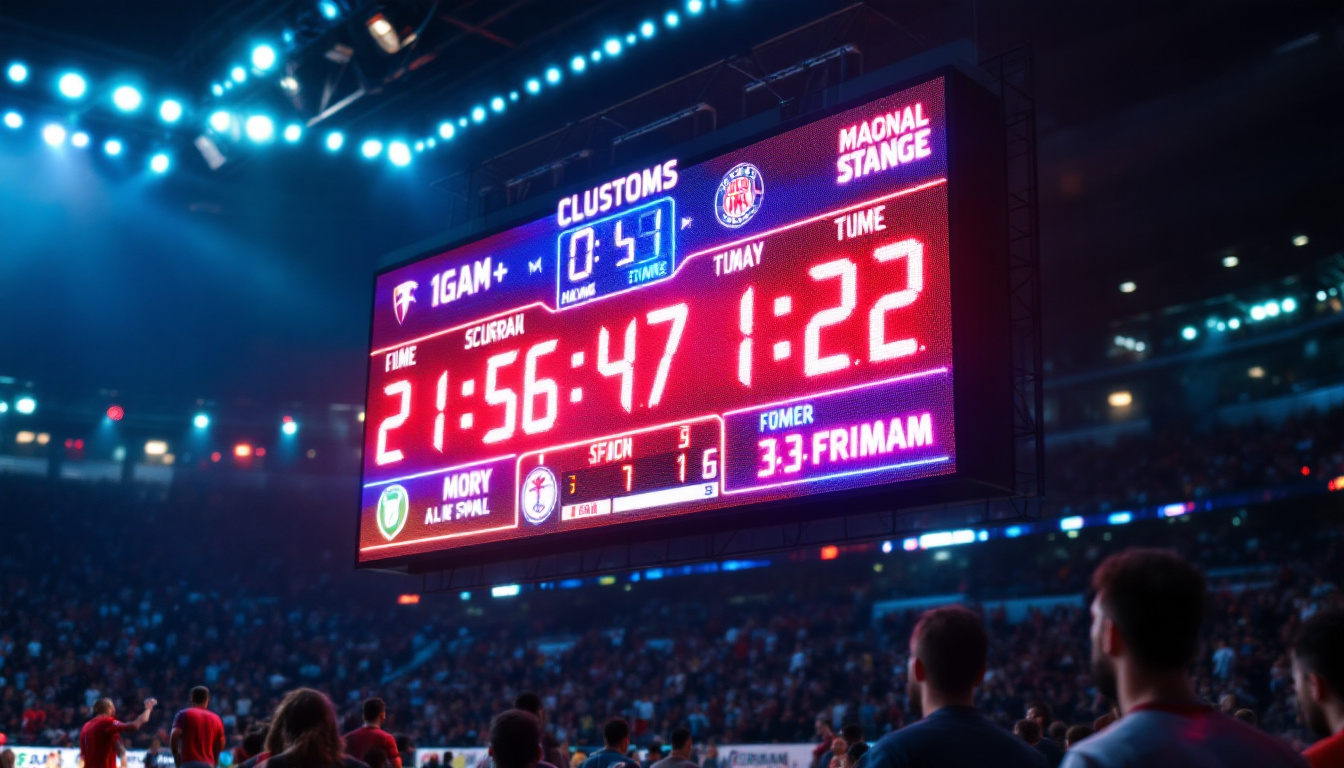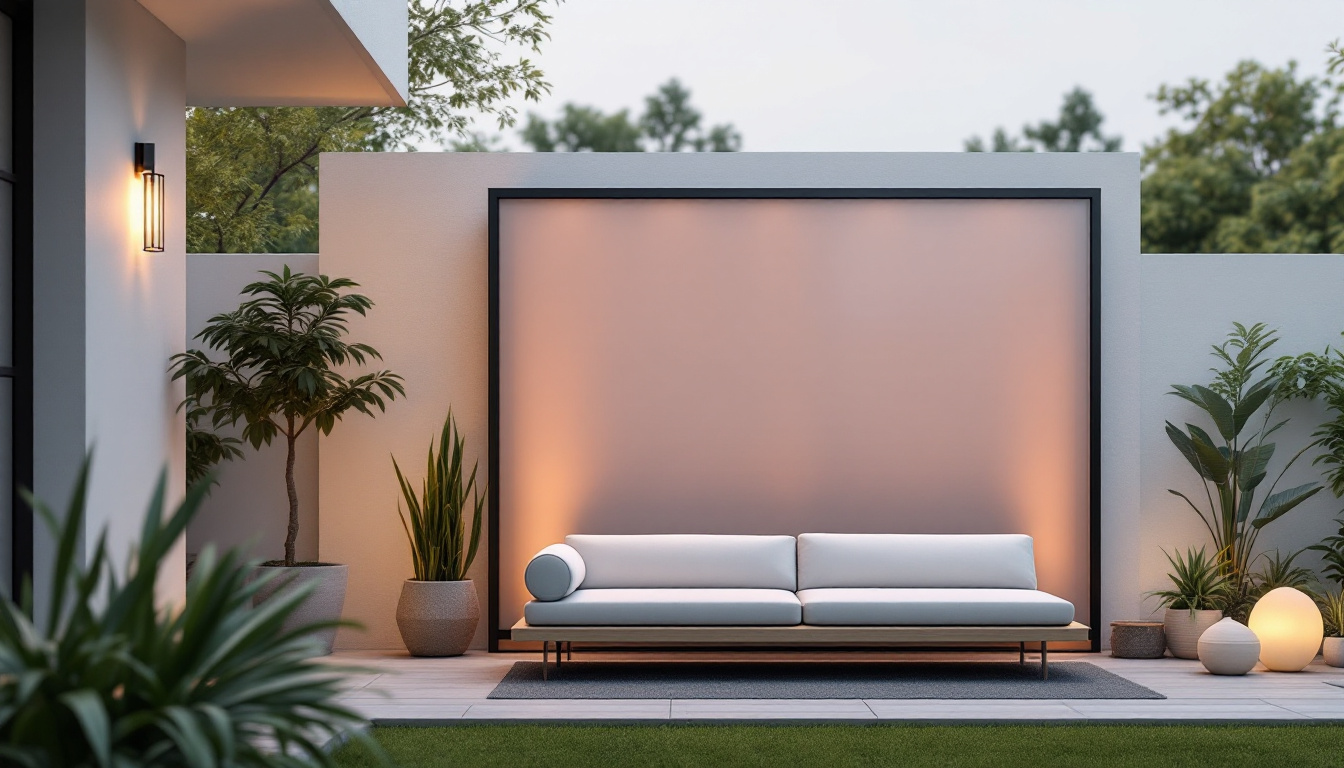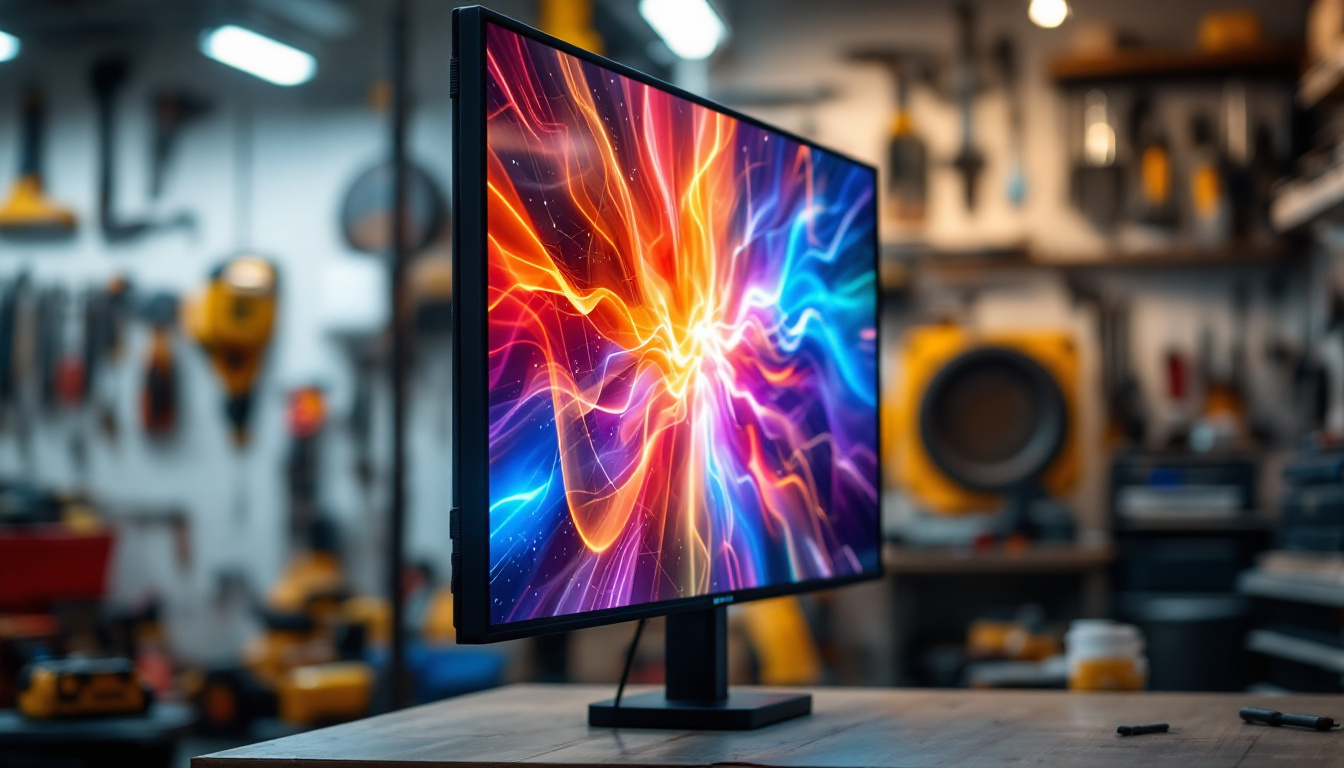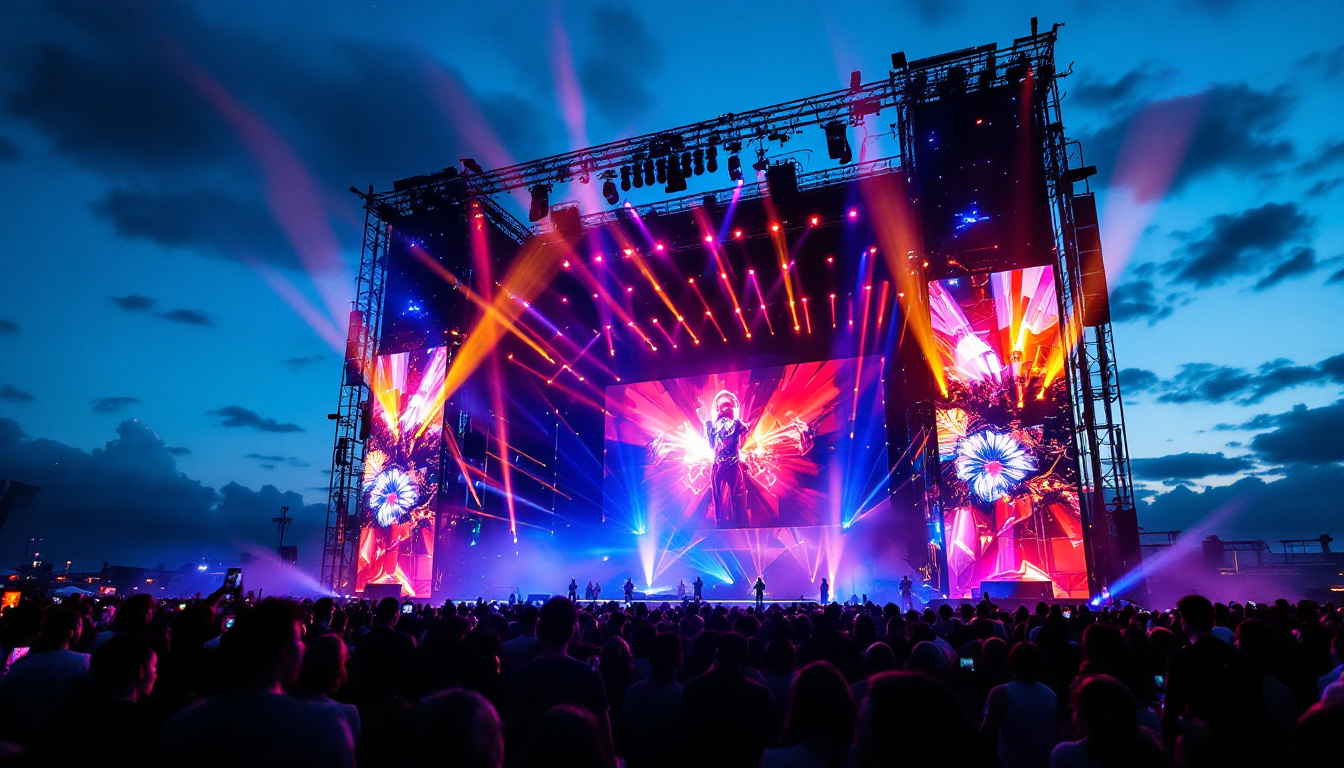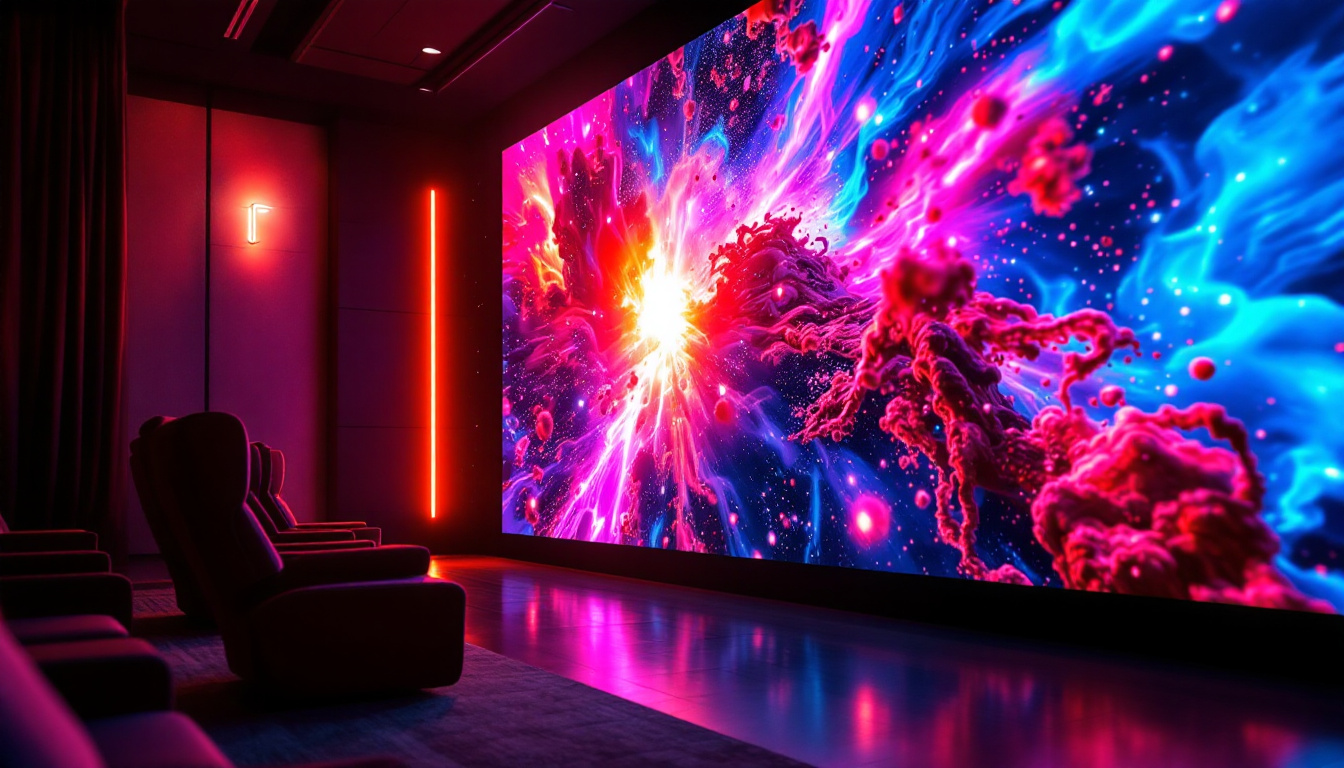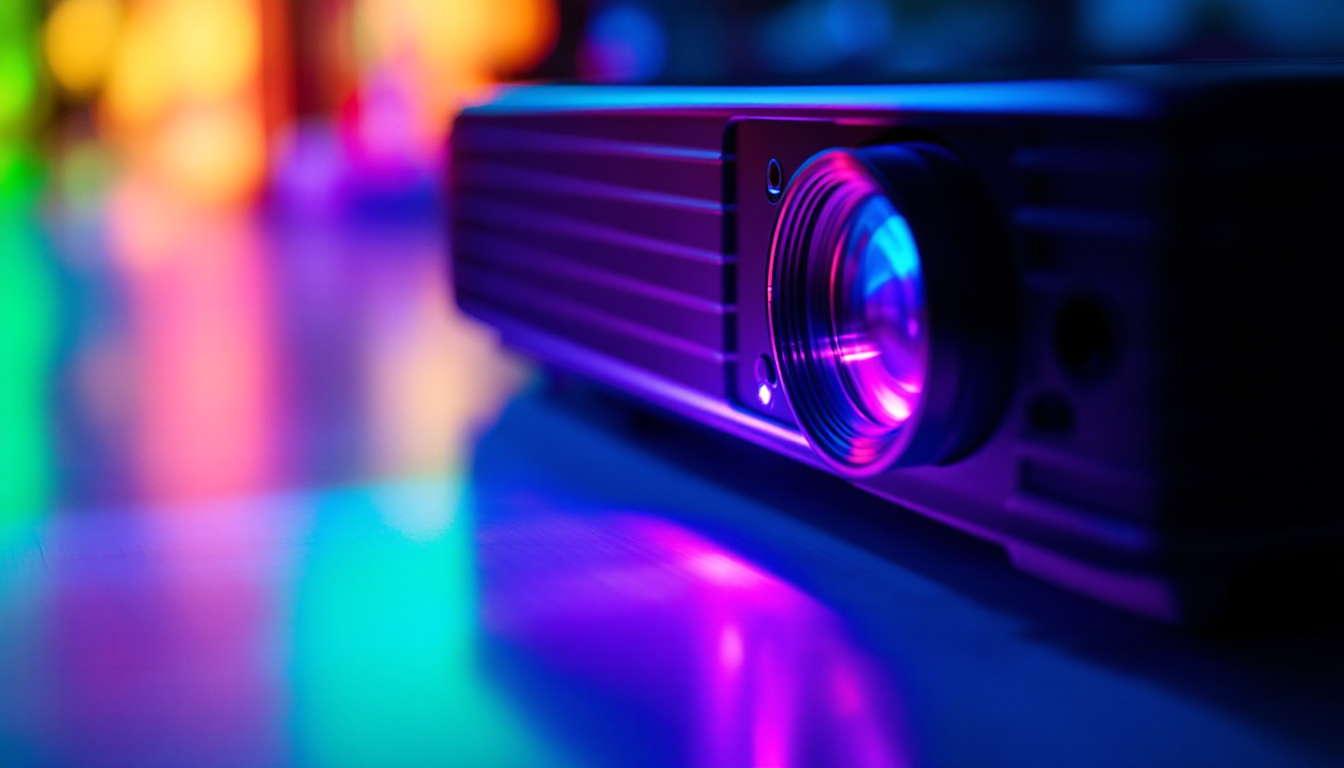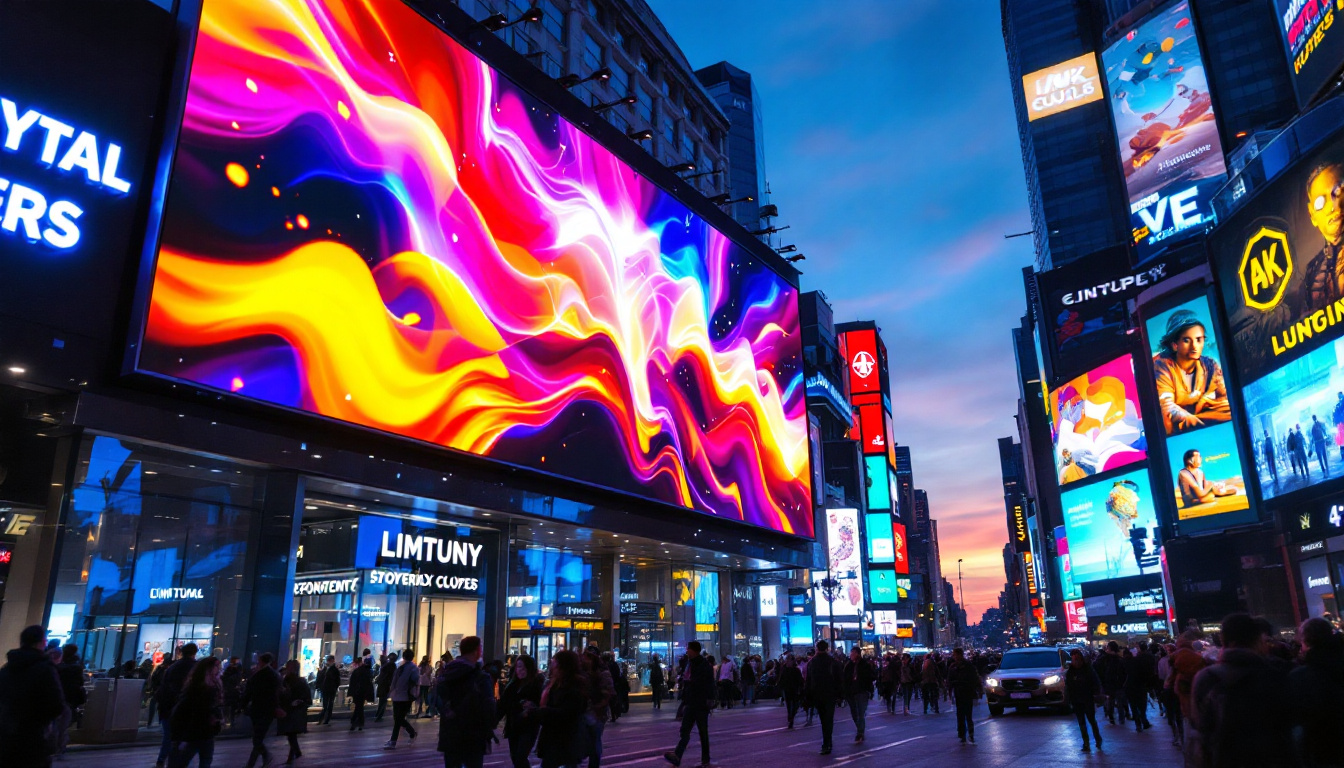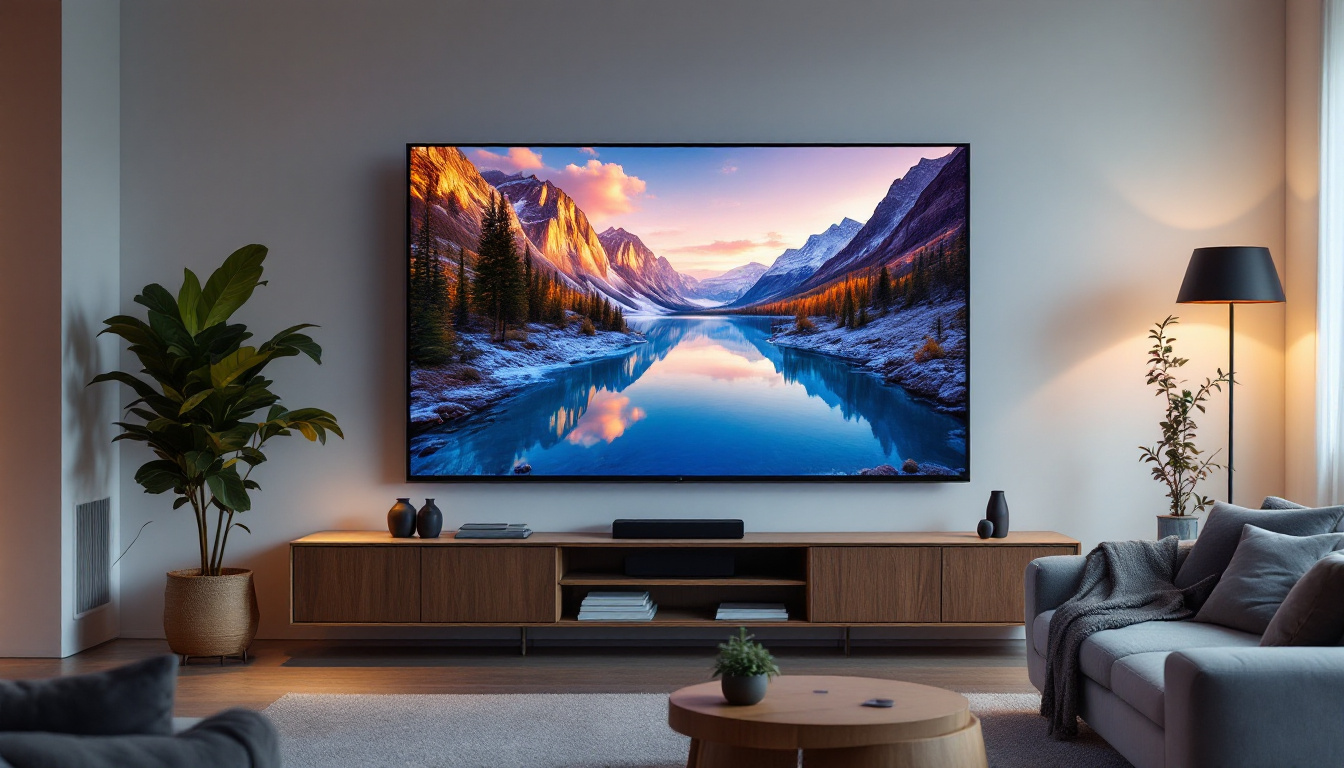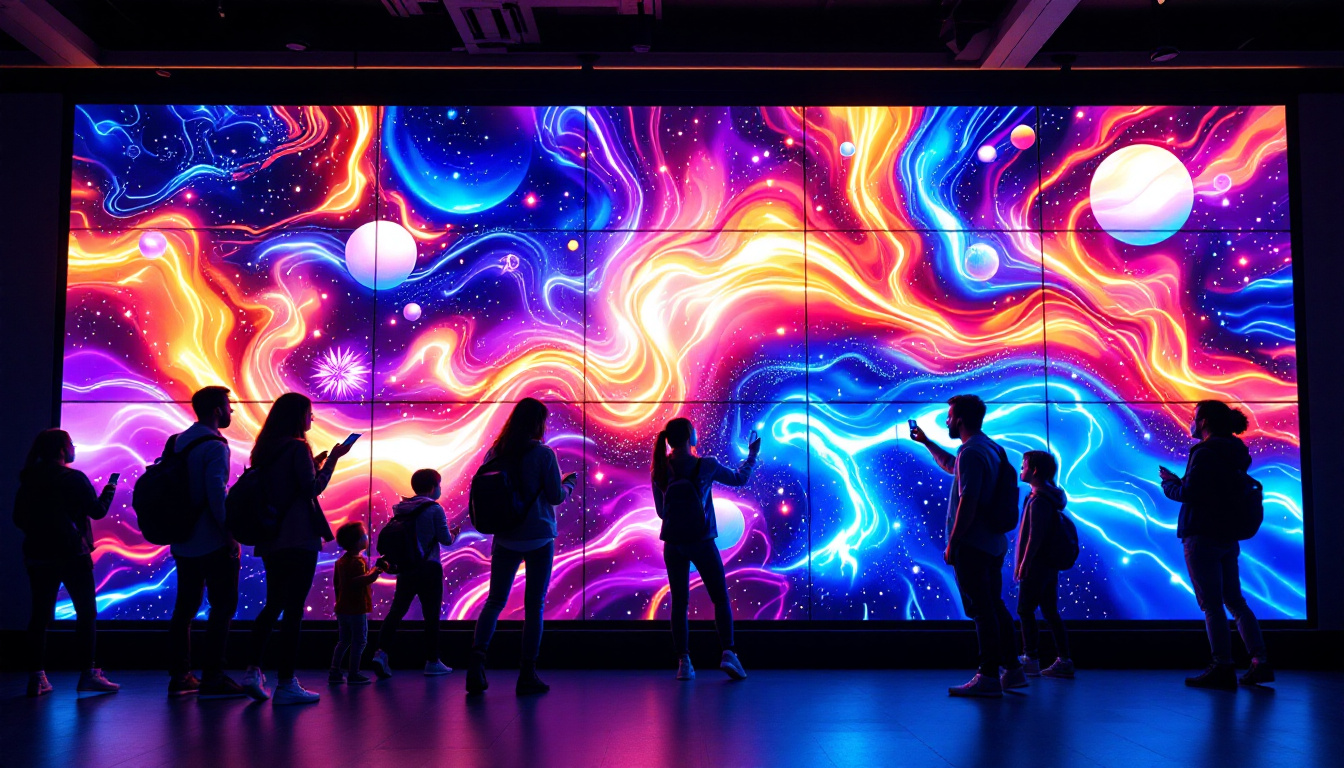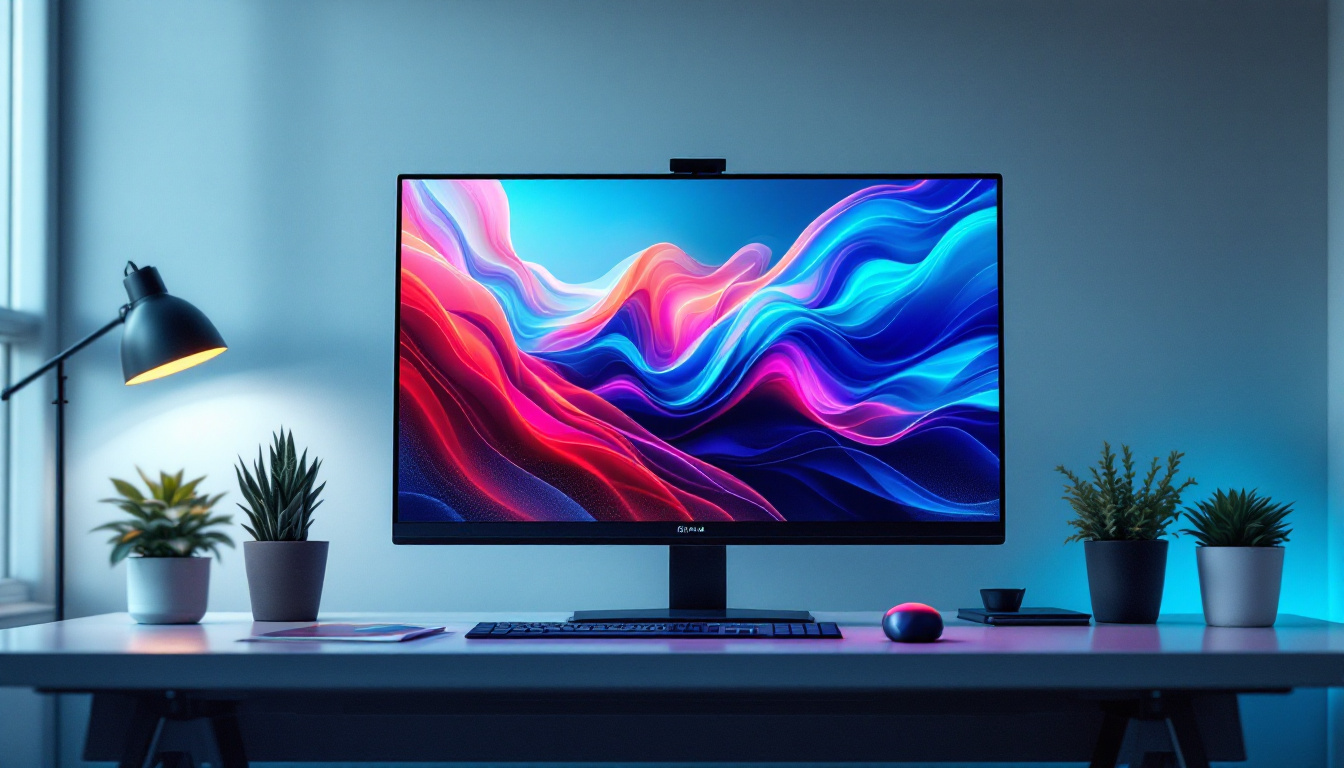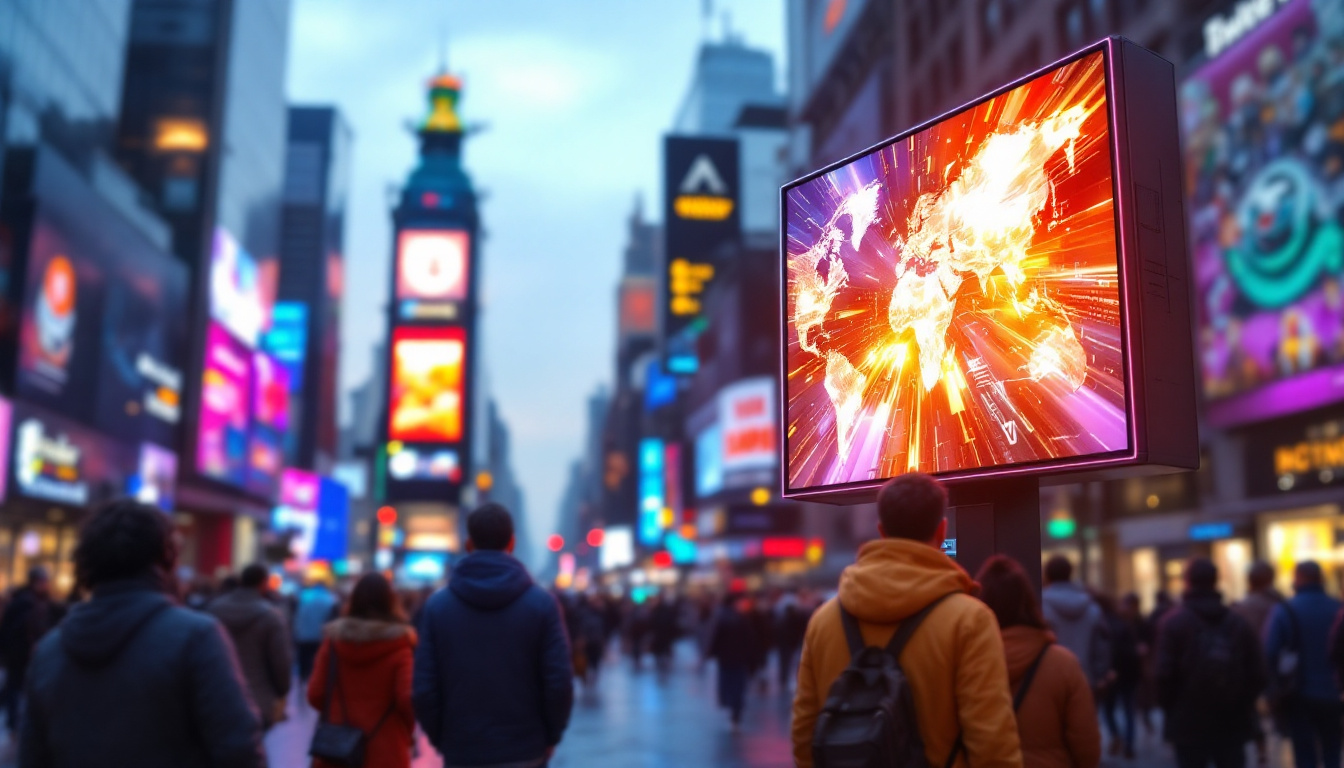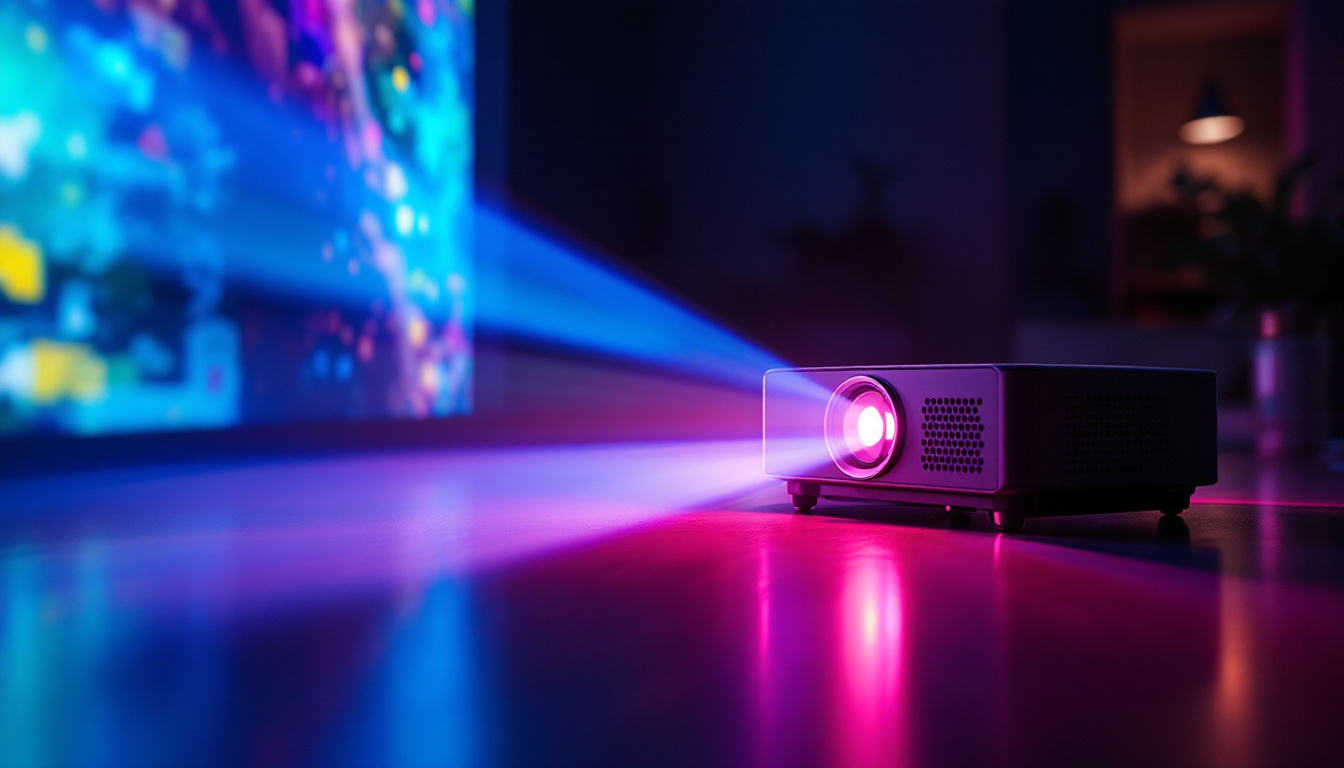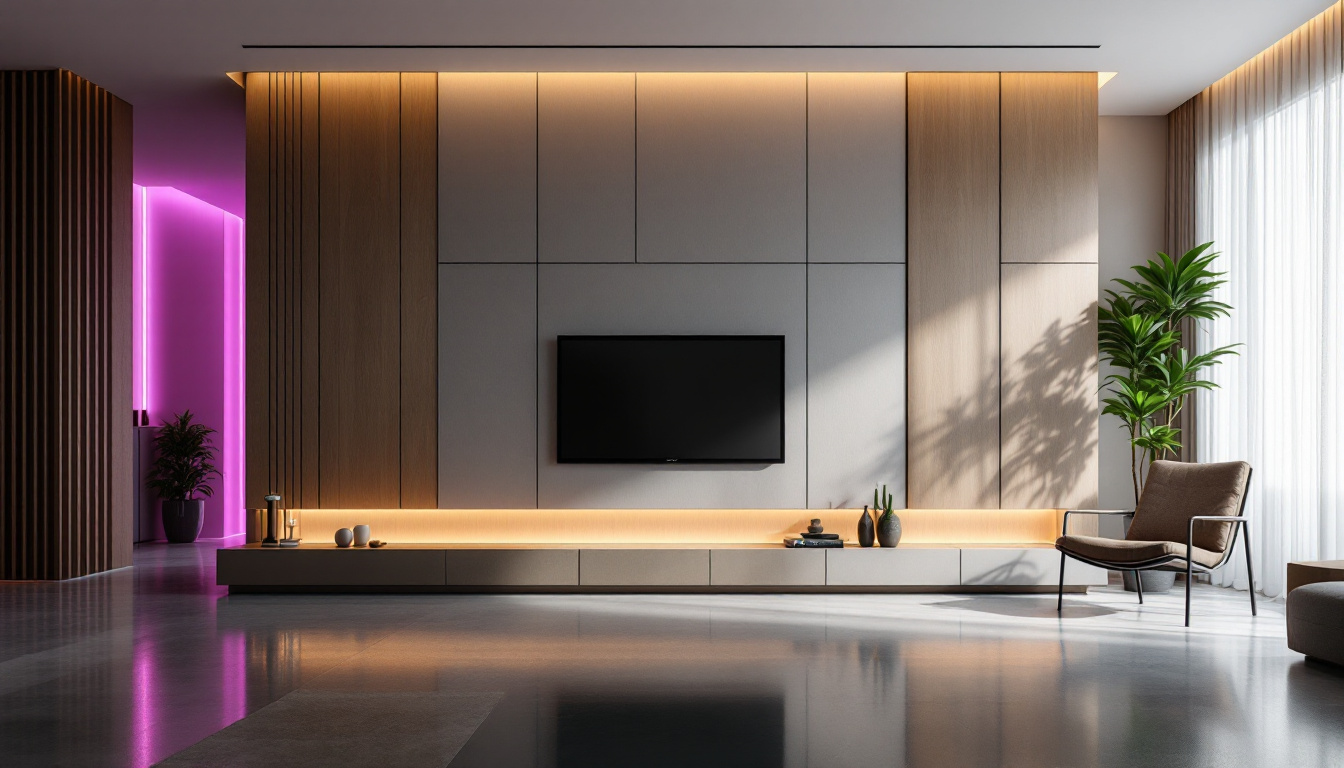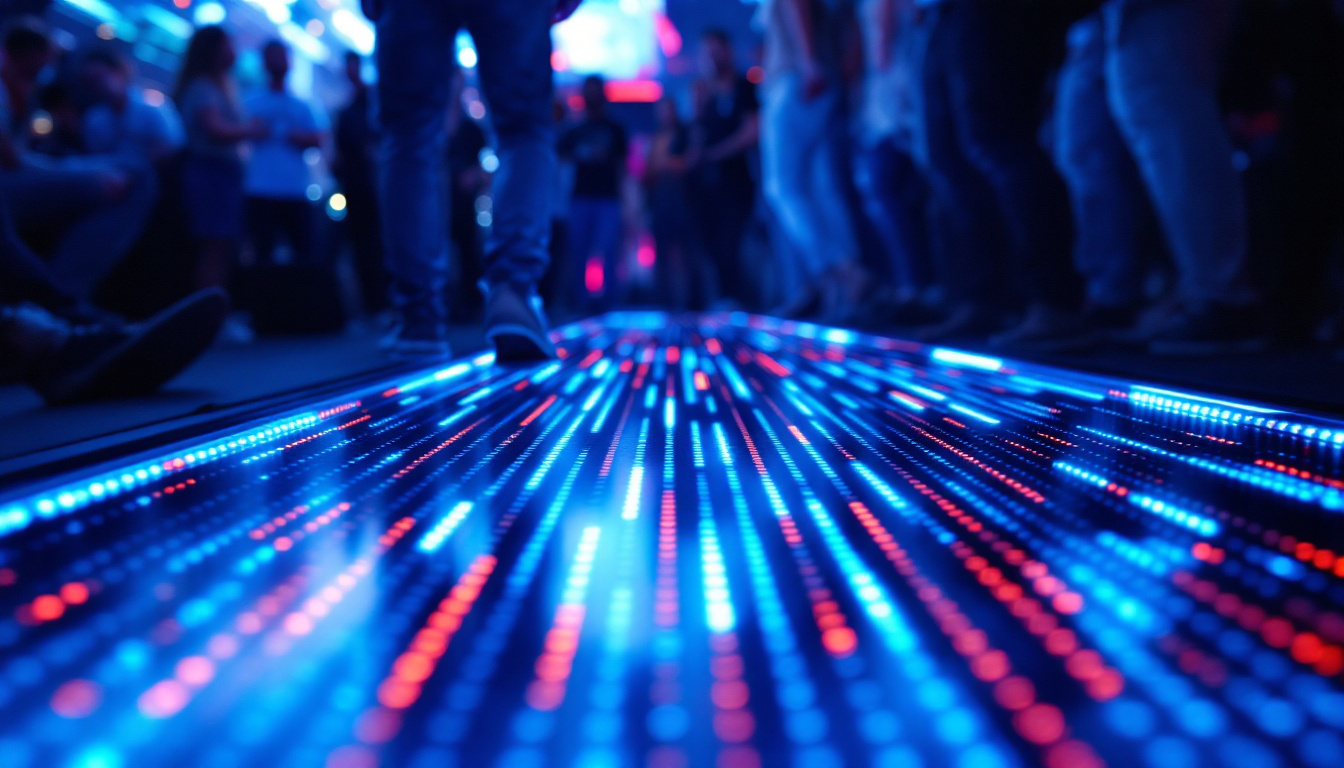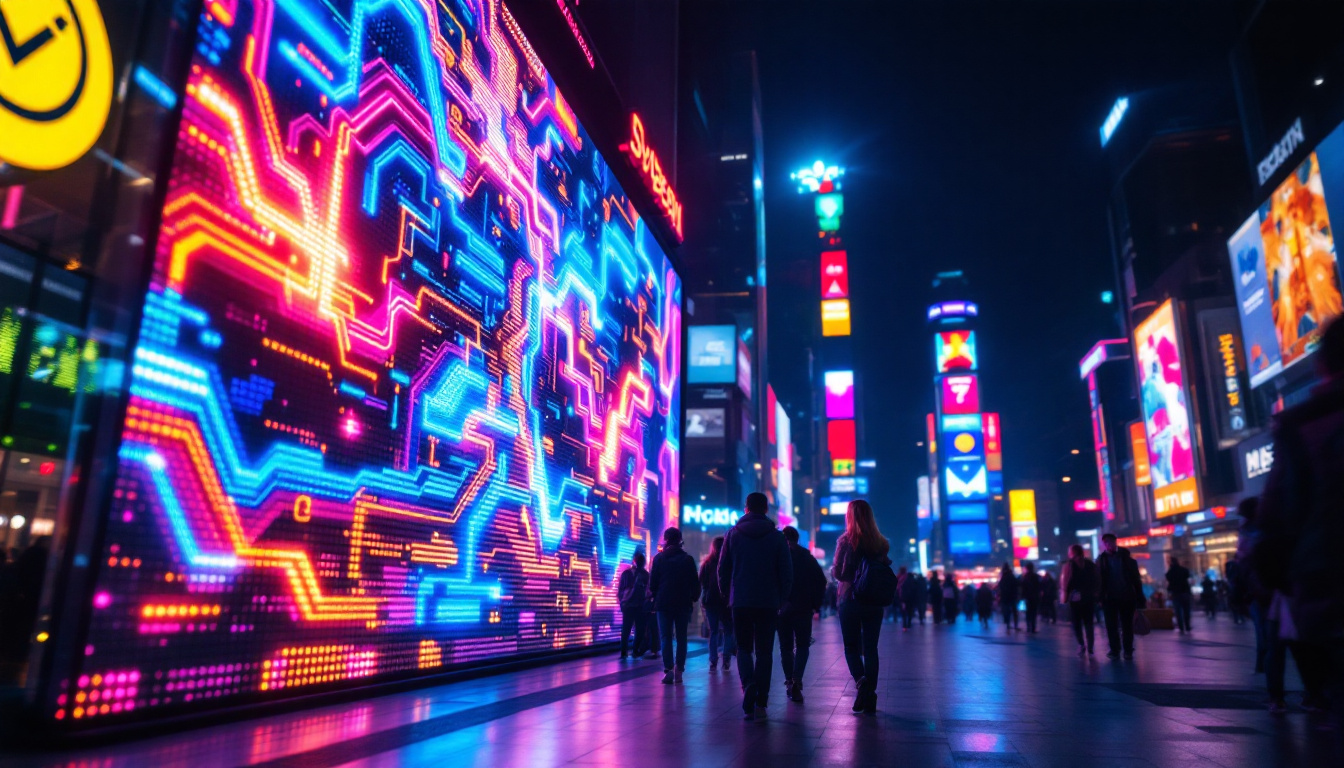In the modern world, visual communication has become an essential component of business and advertising strategies. Among the various technologies available, LED displays have emerged as a popular choice for wall displays due to their versatility, brightness, and energy efficiency. This article delves into the intricacies of LED wall displays, exploring their technology, applications, benefits, and future trends.
Understanding LED Technology
LED, or Light Emitting Diode, is a semiconductor device that emits light when an electric current passes through it. This technology has revolutionized the way displays are created and used, particularly in large-scale wall displays. The efficiency and longevity of LEDs compared to traditional incandescent bulbs have made them a popular choice not just for displays, but for general lighting applications as well. Their low power consumption and minimal heat generation contribute to their appeal, allowing for environmentally friendly solutions in various settings.
How LED Displays Work
At the core of LED displays is the concept of pixels. Each pixel is made up of red, green, and blue (RGB) diodes that can be lit in various combinations to produce a wide spectrum of colors. When these pixels are arranged in a grid, they form a larger display capable of showing images, videos, and text. The intricate arrangement of these RGB diodes allows for precise color calibration, enabling displays to achieve accurate color reproduction that is crucial for applications in photography, graphic design, and broadcasting.
The brightness and clarity of LED displays are largely attributed to their ability to emit light directly, unlike traditional displays that rely on backlighting. This direct emission allows for vibrant colors and high contrast ratios, making LED displays particularly effective in well-lit environments. Furthermore, advancements in technology have led to the development of high dynamic range (HDR) capabilities in LED displays, which enhance the viewing experience by providing deeper blacks and brighter highlights, thus making images appear more lifelike.
Types of LED Displays
LED displays come in various types, each suited for different applications:
- Direct View LED: These displays are made up of individual LED modules that can be assembled into larger screens. They are commonly used for outdoor advertising and large venues, where their high brightness levels can cut through ambient light and attract attention. The modular nature of direct view LED displays also means they can be customized to fit specific dimensions, making them versatile for various architectural applications.
- LED Video Walls: Comprising multiple LED panels, video walls are ideal for creating immersive experiences in control rooms, broadcast studios, and event spaces. The seamless integration of these panels allows for large-scale visuals that can convey information effectively, making them popular in corporate environments for presentations and live events. Additionally, video walls can be programmed to display dynamic content, enhancing audience engagement.
- Transparent LED: This innovative type allows for visibility through the display, making it perfect for retail environments where showcasing products is essential. Transparent LEDs can be used in shop windows to create eye-catching advertisements without obstructing the view of the merchandise behind them. This feature not only enhances the aesthetic appeal of retail spaces but also provides a unique platform for interactive marketing, allowing customers to engage with the content displayed while still being able to see the products on offer.
Applications of LED Wall Displays
LED wall displays are utilized across various sectors, each leveraging their unique advantages to enhance communication and engagement.
Advertising and Marketing
One of the most prominent uses of LED displays is in advertising. Brands utilize large LED screens in high-traffic areas to capture attention and convey messages effectively. The dynamic nature of LED displays allows for changing content, making them ideal for promotions and announcements.
Additionally, the ability to display high-definition video content enables brands to create captivating advertisements that engage viewers on multiple sensory levels. This has proven to be a powerful tool in driving foot traffic and increasing brand visibility. With the rise of digital marketing, LED displays can also be integrated with social media feeds, allowing brands to showcase user-generated content in real-time, further enhancing audience interaction and brand loyalty.
Corporate Communication
In corporate settings, LED displays serve as an effective means of internal communication. Companies often install these displays in lobbies, conference rooms, and break areas to share important information, such as company news, performance metrics, and event schedules.
Moreover, LED displays can enhance presentations during meetings and conferences, providing a visual aid that can help convey complex information more clearly. This integration of technology not only improves communication but also fosters a modern and innovative workplace culture. Furthermore, the use of LED technology in corporate environments can promote employee engagement by displaying motivational messages, celebrating achievements, or even showcasing employee contributions, thus creating a more cohesive and motivated workforce.
Entertainment and Events
The entertainment industry has embraced LED wall displays for concerts, festivals, and live events. These displays create stunning visual backdrops that enhance the overall experience for attendees. From vivid graphics to synchronized video content, LED displays can elevate performances and engage audiences in ways traditional displays cannot.
Furthermore, LED technology is often used in sports arenas to display scores, replays, and advertisements, enriching the spectator experience and creating a more immersive environment. The versatility of LED displays allows for customization, enabling event organizers to tailor the content to match the theme of the event or the preferences of the audience. Additionally, advancements in LED technology, such as flexible and transparent displays, are paving the way for innovative designs that can transform any venue into a visually captivating space, making every event memorable and unique.
Benefits of LED Wall Displays
The growing popularity of LED wall displays can be attributed to several key benefits that set them apart from other display technologies.
Energy Efficiency
One of the standout features of LED displays is their energy efficiency. Compared to traditional LCD or plasma screens, LED displays consume significantly less power, making them a more sustainable choice for long-term use. This efficiency translates into reduced operational costs, which is particularly beneficial for businesses that rely on large displays for extended periods.
Durability and Longevity
LED displays are known for their durability. They are built to withstand various environmental conditions, making them suitable for both indoor and outdoor applications. With proper maintenance, LED displays can last for over 100,000 hours, significantly outpacing other display technologies.
This longevity not only reduces the need for frequent replacements but also contributes to lower waste, aligning with environmentally conscious practices.
High Brightness and Contrast
LED displays excel in brightness and contrast, allowing them to perform well in diverse lighting conditions. This capability makes them ideal for outdoor advertising, where sunlight can diminish the visibility of traditional displays. The high contrast ratios ensure that images and text remain sharp and clear, enhancing the viewer’s experience.
Challenges and Considerations
While LED wall displays offer numerous advantages, there are also challenges and considerations that potential users should be aware of.
Initial Costs
The initial investment for LED displays can be higher than other display technologies. However, when considering the long-term benefits, including energy savings and durability, many businesses find that the investment pays off over time. It is essential to weigh these factors against budget constraints and expected usage.
Installation and Maintenance
Installing LED wall displays can be complex, requiring professional expertise to ensure optimal placement and functionality. Additionally, while LED displays are durable, they may require periodic maintenance to keep them in peak condition. Understanding the maintenance requirements and costs associated with these displays is crucial for long-term planning.
Content Management
To fully leverage the capabilities of LED displays, effective content management is necessary. Businesses must invest in software and systems that allow for easy content updates and scheduling. This aspect can be a learning curve for organizations that are new to digital signage.
Future Trends in LED Display Technology
The landscape of LED display technology is continually evolving, with several trends shaping its future.
Integration with Smart Technology
As smart technology becomes increasingly prevalent, LED displays are expected to integrate with various smart systems. This integration can enhance functionality, allowing for real-time data display, interactive features, and automated content updates based on audience engagement.
Advancements in Resolution
With the demand for higher resolution displays on the rise, manufacturers are continuously working to improve pixel density and image clarity. The development of microLED technology promises to deliver even finer resolutions, making LED displays suitable for applications that require exceptional detail, such as art galleries and high-end retail environments.
Environmental Sustainability
As sustainability becomes a priority across industries, the LED display sector is also focusing on eco-friendly practices. This includes using recyclable materials, reducing energy consumption, and developing displays that have a lower environmental impact throughout their lifecycle.
Conclusion
LED wall displays have transformed the way information is communicated across various sectors. Their energy efficiency, durability, and vibrant visual capabilities make them an attractive option for businesses looking to engage their audiences effectively. While there are challenges to consider, the benefits often outweigh the drawbacks, especially when viewed through the lens of long-term investment.
As technology continues to advance, LED displays will likely become even more integrated into our daily lives, offering innovative solutions that enhance communication and engagement. Understanding the nuances of this technology is essential for businesses aiming to leverage its full potential in a competitive landscape.
In summary, LED wall displays are not just a trend; they are a vital tool for modern communication, capable of adapting to the evolving needs of businesses and audiences alike.
Discover LumenMatrix’s Innovative LED Display Solutions
Ready to elevate your visual communication strategy with the latest in LED technology? LumenMatrix is at the forefront of creating immersive and dynamic visual experiences tailored to your needs. From Indoor and Outdoor LED Wall Displays to specialized solutions like Vehicle, Sports, and Floor LED Displays, our offerings are designed to captivate your audience and amplify your message. Explore our range of Custom, All-in-One, and Transparent LED Displays to discover how LumenMatrix can transform your space and engage viewers like never before. Check out LumenMatrix LED Display Solutions and join the revolution in visual communication.


